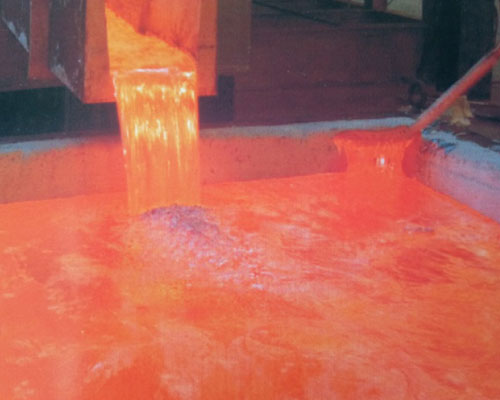Melting and pouring process is important links in casting production. Most scraps are caused by improper control of the smelting and pouring process. Strict control of the entire production process of smelting and pouring plays an important role in preventing casting defects (such as pores, pinholes, inclusions, cold insulation, under-casting, and cracks). Due to the absorption of molten aluminum, it has strong oxidizing power and is easy to dissolve iron. The higher the temperature, the greater the tendency to inhale hydrogen, and the longer the time, the more inhalation. Corresponding preventive measures must be taken during the entire smelting and casting process to produce qualified castings.
Melting and Pouring Process
In order to smelt qualified molten aluminum, qualified raw materials should be selected first. And scientific management and proper processing of raw materials, otherwise it will seriously affect the quality of the aluminum melt.

The study, about the influence of aluminum-silicon alloy ingots on aluminum alloy pinholes, found that there are no pinholes when using pure aluminum to cast sand test blocks. When an aluminum-silicon alloy ingot with an unqualified macrostructure is added, the text block has severe pinholes and coarser particles. The reason is that due to the heredity of the material, the heritability of aluminum-silicon alloy increases with the increase of silicon content. In order to solve the casting defects caused by the heredity of the charge, it is necessary to choose aluminum chains, aluminum alloy additives, and other charges with high metallurgical quality.
The charge should be sandblasted before use to remove rust, grease and other dirt on the surface. The storage time is not long, and the aluminum alloy ingots and recharge materials with relatively clean surfaces can be treated without sand blowing, but the iron filter, cuttings, sand blocks, and inlays mixed in the charge should be eliminated. All the charge should be preheated before entering the furnace and removed the moisture adsorbed on the surface, which can shorten the smelting time to less than 3 hours. Under the premise of ensuring dryness, preheating is not necessary. In short, the charge should be kept dry, clean and free of debris when entering the furnace.

